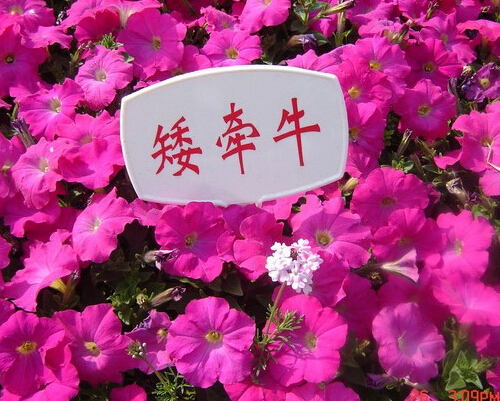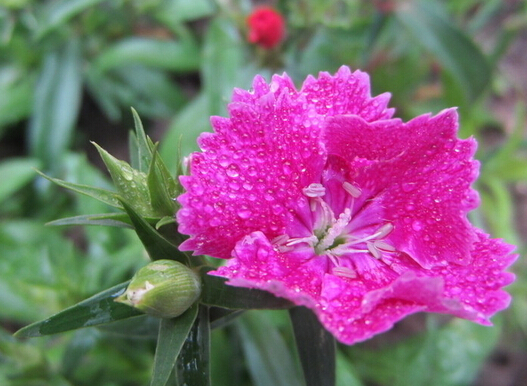Planting techniques of Ulmus pumila
Sanguisorba officinalis is a perennial herb of Rosaceae. It is a traditional Chinese medicine in China and has a wide range of distribution. The tender stems and spikes of Sanguisorba officinalis can be used for stir-frying and cooking, with various effects such as hemostasis and cooling blood, heat-clearing and detoxification, and also has a certain ornamental. So how to plant elm? The following editor brings you the planting technology of Ulmus pumila, let's have a look!

1. Seed collection and soaking
The best time for seed harvest is at the end of September every year, when the seed yield is high and the quality can be guaranteed. The adaptability of Ulmus pumila is strong, and the seeds are not easy to fall off, so we can appropriately delay the harvest time to about October, which can improve the seed germination rate. After seed collection, treat the seeds, do a good job of seed soaking and disinfection, and choose warm water when soaking seeds, but the temperature should not be too high, otherwise the seeds may be scalded. Attention should be paid to the use of disinfectants to prevent excessive disinfection and affect seed germination.
2. Sowing seeds at the right time
After dealing with the seeds, choose the sandy soil with sufficient light and fertility, and then turn the soil deeply to make the bed, combined with the application of sufficient base fertilizer. Control the sowing density comprehensively and evenly sow in the soil, cover the fine soil after sowing, properly suppress, and pour enough water. Before the emergence of seedlings, it is necessary to ensure that the soil is moist enough, and the soil temperature should be controlled at about 18 degrees to prevent the seed germination of Ulmus pumila from being affected by too low temperature. generally, seedlings can emerge in 3 weeks. After emergence, management should be strengthened to ensure the healthy growth of Ulmus pumila seedlings and create a good growth environment for seedlings.
3. Field management
The growth ability of Ulmus pumila is relatively strong, so the field management can be relaxed properly. However, the lower water demand is relatively large, so it is necessary to keep the soil moist and water regularly during planting. And appropriate topdressing, when topdressing to control the use of nitrogen fertilizer, mainly rotten farm manure. Topdressing is needed for each harvest to restore the growth of Sanguisorba officinalis, promote leaf growth and delay bolting of Sanguisorba pumila. If the planting direction is tender leaves, then when the plant bolts, it is necessary to remove the flowers to promote the growth of new leaves. Finally, it is necessary to do a good job in weeding and weeding to prevent weeds from grabbing the growth and nutrition of elm.
4. Pest control
The incidence of diseases and insect pests of Sanguisorba officinalis is relatively low, because of its strong growth ability, but in the case of poor management. There will still be some diseases and insect pests, such as powdery mildew, beetles and so on. Therefore, we should also do a good job in the prevention and control of diseases and insect pests, often weed, control planting density, and prevent planting too dense to reduce field permeability. It is necessary to ensure that Ulmus pumila absorbs sufficient light to prevent excessive humidity in the field. Often observe the growth situation, and when it is found that there are symptoms, timely measures should be taken to prevent the spread of the disease.
The above is a brief introduction of the planting technology of Ulmus pumila, the planting technology of Ulmus pumila is relatively simple, and the management is not so troublesome. However, we still need to do a good job in the basic work, otherwise it will have a certain impact on the elm. That's all for today's introduction. This article is for reference only. Thank you for your reading and support.
- Prev

Breeding methods of Petunia
Growth habits of Petunia: native to Argentina, South America. Sex likes warm, cold-resistant, hot, dry and sunny summer blossoms. Avoid rain and waterlogging, good drainage and loose, fertile, slightly acidic soil. The seeds are very small and the germination rate is 60%. Propagation and cultivation: sowing or cutting
- Next

How to grow carnation flowers?
Carnation: dianthuschinensisl morphological characteristics: Caryophyllaceae, plant height 30-50cm, stem erect or slightly creeping at the base. Leaves simple, opposite, linear, needle-shaped, base clasping. Flowers solitary or several forming Cymes; white to pink
Related
- Fuxing push coffee new agricultural production and marketing class: lack of small-scale processing plants
- Jujube rice field leisure farm deep ploughing Yilan for five years to create a space for organic food and play
- Nongyu Farm-A trial of organic papaya for brave women with advanced technology
- Four points for attention in the prevention and control of diseases and insect pests of edible fungi
- How to add nutrient solution to Edible Fungi
- Is there any good way to control edible fungus mites?
- Open Inoculation Technology of Edible Fungi
- Is there any clever way to use fertilizer for edible fungus in winter?
- What agents are used to kill the pathogens of edible fungi in the mushroom shed?
- Rapid drying of Edible Fungi

